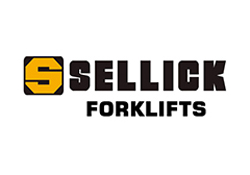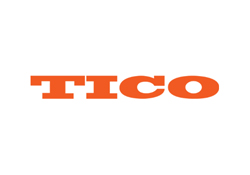
Don’t get stuck without a RELIABLE LIFT.
Regularly inspect these 5 forklift parts to help prevent wear and tear.
Keep your equipment and operations moving – in many companies, lift equipment is moving around the clock. Over time forklift parts, components, and accessories begin to show signs of wear and tear due to their constant motion. Developing wear and tear is part of the game and hindering the equipment’s productivity and overall performance can be costly.
Lift equipment not functioning at its best can cause a loss of time and money due to increased downtime. Not maintaining wear and tear can also create an unsafe work environment – the machine could cause injury to its operator, and internal combustion trucks could give off harmful emissions that can negatively impact your workers’ health.
Here are five places to look for wear and tear on your lift equipment. Getting as much life from your equipment is key in this day and time. Spend a few minutes to look for wear and tear.
TIRES
Forklift tires are designed to be durable and hold a lot of weight, but just like with car tires, need to be replaced when they’re worn out. Bad tires can cause truck and load stability issues, discomfort to operators, damage to forks and undercarriage components, and even facility damage. Here are a few things to look for that indicate you may need to replace your tires:
- Worn low: Most forklift tires have a clearly defined line beneath the tread, often referred to as the 50 percent wear line. If you are close to or have worn through that line, it is time to replace the tire.
- Tearing: Look for obvious tears and punctures on the surface of your tires. This type of damage is often caused by running the forklift over debris – a clean and well-swept workspace helps prevent tearing.
- Chunking: If pieces of your tires are breaking or peeling off the body, it is time to replace them. Chunking renders the wheel useless, causing truck instability and operator discomfort.
- Flat Spots: Flattening typically occurs when the forklift brakes at high speeds. If you notice any bald spots, the tire should be replaced. If the abrupt braking continues more frequently, the operator likely needs re-trained on safe operation of the forklift at reasonable speeds. Frequent sharp halts will not only make you replace your tires sooner than expected but also your brakes.
- Bond Failure: Cushion tires have a central metal band with the rubber of the tire bonded to the metal band. If wear and tear near the band is bad enough that you can fit a flat screwdriver head or knife between the tire and band, you are overdue to switch out your tires.
- Oil or Grease Stains: The chemicals in oil and grease can eat away at tire rubber over time. Oil or grease on the tires can also hazardously affect control of the forklift. If you see these types of stains, inspect your facility floor and clean the affected areas to avoid other potential hazards.
OIL AND AIR FILTERS
Your forklift’s oil and air filters protect the engine from preventable damage. A functional air filter keeps dirt and debris from affecting the engine’s performance, and the oil filter ensures clean oil is running through the engine; contaminated oil can increase engine component friction. Both should be replaced at recommended intervals to maintain maximum efficiency.
If you notice you need to replace air filters at a frequent rate, consider investing in solutions to improve the cleanliness of your facility – if it’s affecting your equipment, it’s affecting your operators, too!
MASTS AND CHAINS
A forklift’s mast and chains experience heavy and frequent demands when in operation. This stress to the machine means these components should be inspected and replaced regularly to maintain safety and efficiency.
The mast is the vertical apparatus at the front of the forklift that allows a load to be raised, lowered, and tilted. One clear sign of wear and tear is metal-on-metal contact. If you hear grinding noises during operation or see visible scrape marks, it may be time to replace the mast.
Forklift chains can perform for thousands of hours of work if properly lubricated. If you notice rust, plate cracking, protruding or turned pins, or broken links, the chain needs to be replaced. These issues can be prevented with proper lubrication.
BATTERY
If you have an electric forklift, battery maintenance is of the utmost importance in maximizing efficiency and minimizing lifetime costs. Batteries have a finite number of charging cycles, so sticking to a charging schedule is critical to maximizing a battery’s life and usefulness – not enough charge at the beginning of a shift means more downtime and charging too frequently could risk shortening the battery’s life.
For optimal battery performance, regular fluid level checks are necessary. If there is not enough fluid in the battery, you will need to add water – water typically needs to be added every 10 charges. Watering batteries can be a delicate process, as both the type and amount of water are integral in making the battery work well.
FORKS
A lift truck’s forks experience stress with each load. While they are heavy-duty in construction, they will still wear out over time. Waiting too long to replace worn-out forks will likely lead to more-frequent accidents, such as dropped loads, damaged products, and workplace injuries. Fortunately, these accidents are preventable with regular fork inspections. Here are five critical signs of wear and tear that tell you it’s time to replace or restore your forks:
- Surface cracks: Over time, forks can develop cracks from picking up, unloading, and transporting heavy loads. The parts of the fork closest to the equipment and the fork heel tend to obtain the most wear and tear.
- Bent or worn fork hooks: Using a caliper, checks the hooks for wear and straightness. If the lip of the hook touches the back of the caliper, you should replace your forks.
- More than 10 percent wear: The metal on forks gradually wears down with consistent use, but eventually the forks can no longer handle their original load capacity. Just 10 percent wear can reduce your load capacity by 20 percent, at which point the forks should be replaced. Metal wear is not obvious to notice over time – use calipers to measure the shaft and compare that measurement to the thickness of the fork blade, heel, and hook to calculate the wear.
- Uneven blade height: The tips of both forklift blades should roughly be the same height. If one of the forks differs by more than three percent of the blade length, the forks need to be replaced.
- Bent blade or shank: All forks are delivered with a 90-degree angle. The forks need to be replaced if the blades or shanks are bent more than 93 degrees – while it may look fixed, simply bending the fork back into place will not repair it, as the integrity of the fork is already compromised.
Increase your uptime with regular scheduled maintenance.
Regular maintenance can lead to safer work environments, improved performance, reduced downtime, cost reductions, as well as higher resale values on your equipment.
Gregory Poole is here when you need us. We can design a service plan that works for you to keep your equipment running smoothly and prevent costly downtime of your equipment.
Don’t let wear and tear get you down. Contact us today!











